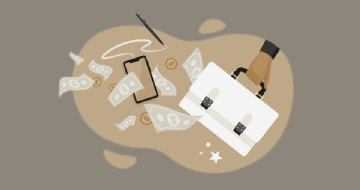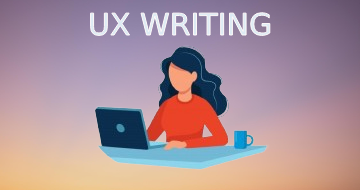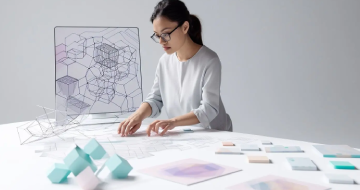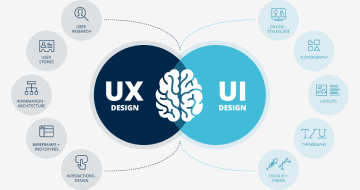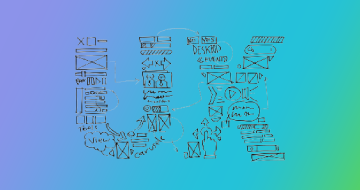IIRF Online > Design > User Experience Design > UX Writing (User Experience Writing) > Foundations of User Experience (UX) Design
Foundations of User Experience (UX) Design by Coursera
Course Highlights
- Identify common job responsibilities of entry-level UX designers and other teams you might work with.
- Understand foundational concepts in UX design, such as user-centered design, the design process, accessibility, and equity-focused design.
- Explain why design sprints are an important and useful part of a UX designer’s work.
Skills you will learn!
Curriculum
37 Topics
Welcome to the Google UX Design Certificate
Michael: Get started in UX design
Introduction to Course 1: Foundations of User Experience Design
Welcome to module 1
The basics of user experience design
Jobs in the field of user experience
The product development life cycle
Design for good user experience
Job responsibilities of entry-level UX designers
Specialists generalists and T-shaped designers
Dane - A day in the life of an entry-level UX designer
Erika - Generalist or specialist designer
Work in a cross-functional team
UX design jobs at different types of companies
From certificate to career success
Juan - A UX design career journey
Mike - A UX design career journey
Wrap-up: Introducing user experience design
Begin the Google UX Design Certificate
Obtain the Google UX Design Certificate
Helpful resources and tips
User experience careers
Most common UX tools
Stay current with the UX industry
Learn more about the product development life cycle
Characteristics of good user experience
Review: Identify good user experience
The role of a beginner UX designer
Interact with cross-functional teammates
The influence of company size and industry
Glossary terms from module 1
Test your knowledge of the roles you can pursue in UX design
Module 1 Challenge: The basics of user experience design
Self-Reflection: Your journey to become a UX designer
Commit to completing the program
Participant entry survey
Identify a good user experience
17 Topics
Welcome to week 2
Universal design inclusive design and equity-focused design
The importance of equity-focused design
Get to know platforms
Design for different platforms
User-centered design
Assistive technology
Elise - The importance of assistive technology
Akhil - Thinking about users new to technology
Designing cross-platform experiences
Who are my users?
Additional resources on designing for accessibility
User-centered design and assistive technology
Glossary terms from module 2
Module 2 challenge: Thinking like a UX designer
Test your knowledge on equitable design approaches
Test your knowledge on the user
28 Topics
Welcome to module 3
Introduction to design sprints
Five phases of design sprints
Benefits of design sprints
Plan design sprints
The design sprint brief
An entry-level designer’s role in a sprint
Jason - All about design sprints
Design sprint retrospectives
Wrap up module 3
Design thinking: A UX design framework
UX design business requirements
Phase 1: Empathize with users
Phase 2: Define users’ needs
Phase 3: Ideate solutions
Phase 4: Prototype solutions
Phase 5: Test solutions
Learn more about design sprints
Common retrospective questions
Glossary terms from module 3
Test your knowledge on the design thinking framework
Test your knowledge on planning a design sprint
Self-Reflection: Identify the benefits of design sprints
Self-Reflection: Think through a retrospective for a previous project
Test your knowledge on design sprint retrospectives
Module 3 challenge: Design sprints
Test your knowledge on design sprints
Organize a design sprint
23 Topics
Emily - The power of UX research
Introduction to UX research
Christie - How feedback impacts design
Choose the right research method
Understand benefits and drawbacks of research methods
Craig - My journey to UX
Identify types of bias in UX research
Deana - Identify bias in UX research
Wrap-up: Integrating research into the design process
Congratulations on completing Course 1: Foundations of User Experience Design
Integrating research into the design process
Learn more about UX research
Learn more about research methods
Learn more about bias in UX research
Glossary terms from module 4
Join the community and study group
Course 1 glossary
Start the next course
Activity: Optional - Implicit bias quiz
Module 4 Challenge: Research in the design process
Test your knowledge on the importance of UX research
Test your knowledge on UX research methods
Choose the best research method
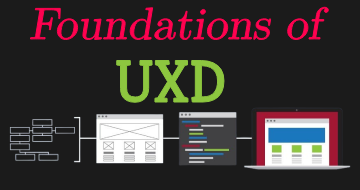
Foundations of User Experience (UX) Design
